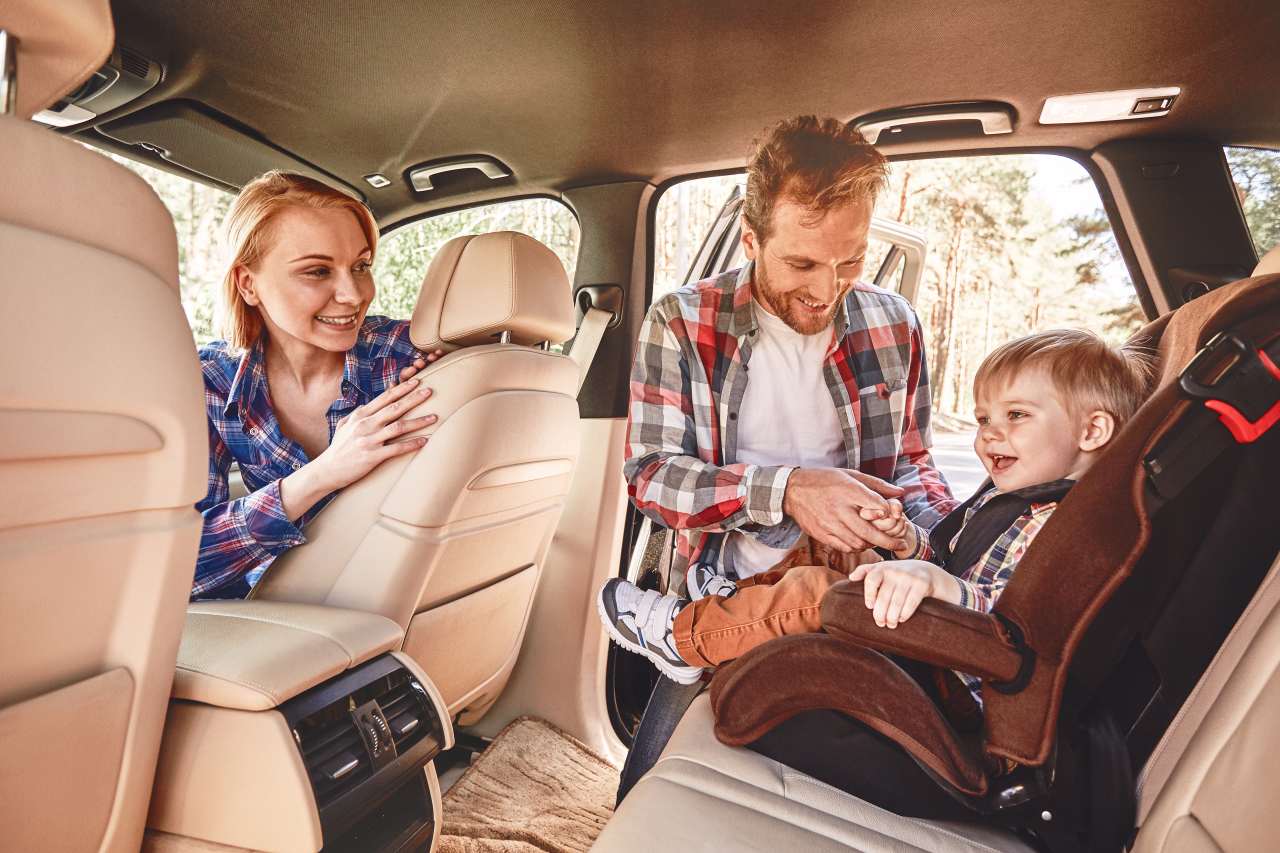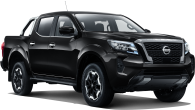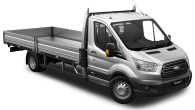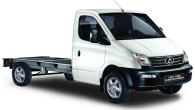Preparations for towing
As mentioned in last month’s report, we wanted to see how the BT-50 performs as a heavy-duty tow vehicle, so as part of our Mazda Genuine Accessories (MGA) installation program we returned to Ringwood Mazda to get the BT-50 kitted out for towing.
Heavy duty Towing Pack (Part No: TF11ACUTP)

The MGA range offers a variety of towing accessories but the most convenient way to get our BT-50 equipped for this role was to install the heavy-duty towing pack, which includes tow-bar, tow-ball, trailer wiring harness, trailer breakaway harness and electronic trailer brake controller.
The tow-bar has a 3500kg tow rating and maximum tow-ball download of 350kg. It integrates neatly with the BT-50’s chassis, with its robust supporting cross-beam upswept at each end where it bolts to the chassis frame. This ensures it’s neatly tucked away, which not only looks good but also provides optimal ground clearance in off-road use.
The tow-ball tongue, which can be easily slid out and stored away when not in use, comes with a 50mm chrome ball. There are also two D-shackles for connection of trailer safety chains plus a trailer wiring harness with 12-pin plug. This harness incorporates power supply for the trailer breakaway unit.
The electronic trailer brake controller’s rotary dial is mounted in a switch panel on the right-hand side of the BT-50’s dash, where it’s easy for the driver to see and adjust. With increments ranging from 0 to 10, it controls the trailer's braking force to enhance towing comfort and safety.
It offers two modes, comprising proportional and user-controlled. The proportional mode allows the driver to adjust the intensity of trailer braking to match that of the tow vehicle, so the harder the vehicle’s brakes are applied, the harder the trailer will brake. This mode, which we use, requires the least input from the driver and is designed for highway travel and general use.
The user-controlled mode allows the trailer’s braking intensity to be determined purely by the setting on the rotary dial, which is often used in off-road applications. For example, by setting the trailer brakes to zero, a driver can avoid potentially hazardous trailer wheel lock-up on low-grip surfaces regardless of how hard the vehicle brakes.
RRP $2150.00
Clearview ‘Next Gen’ Towing Mirrors
We've installed these on previous long-term test vehicles and can attest to their efficiency and ruggedness. We reckon they’re the ultimate towing mirror solution.
The big truck-style Clearviews now fitted to the BT-50 are supplied as direct replacements for the smaller standard mirrors, with plug-and-play wiring for easy installation and use of the Mazda’s safety and convenience functions including electronic adjustment, indicators, blind-spot monitoring (BSM) and power-fold function. They are also available with heating if the host vehicle is equipped with this function (the XTR is not) and there’s a choice of black (like ours) or chrome heads.
Each head embodies a bright orange indicator light and houses two mirrors, which is a design long favoured by the heavy transport industry. The larger upper flat mirror provides a normal view while the smaller lower mirror is slightly curved or ‘convex’ in shape, which provides a wide-angle view to eliminate blind-spots. This is particularly effective when combined with the BT-50’s blind-spot monitoring function.
When retracted, the outside edge of the mirror head sits 340mm from the BT-50’s door, compared to 270mm for the standard mirror. When fully extended on its telescopic mounts, which just requires a firm pull to do so, the Clearview head sits 520mm from the door (or an extra 180mm). So, with these mirrors projecting more than half a metre either side of the BT-50, the driver has a commanding view when towing.
Clearview mirrors are (currently) not listed in the Mazda Genuine Accessories range, so if you’d like them installed on your BT-50 contact your Mazda dealer to arrange ordering and installation.
RRP: from $1672.48 (Clearview)
Competent and comfortable towing
With the BT-50 now fully equipped for this task, we contacted the helpful team at Crusader Caravans located at Epping in Melbourne’s northern suburbs. This award-winning caravan and RV supplier has recently expanded its manufacturing operations into a much larger purpose-built facility, to meet surging buyer demand in Australia and New Zealand.
Crusader’s success is no surprise to us, as we have previously road-tested one of its caravans and could not fault its towing performance. So, for the BT-50 test, Crusader supplied the latest version of its 22-foot Excalibur Serenity (28-foot towing length) which offers the multiple benefits of high strength, low weight and excellent noise/temperature insulation due to Crusader's advanced composite-shell construction. Its four wheels and tandem coil-spring independent suspension also provide a very smooth ride.
Given the BT-50 is rated to tow up to 3500kg of braked trailer, the Excalibur Serenity's 3300kg ATM (or Aggregate Trailer Mass which is how much it can legally weigh when fully loaded) sits comfortably below that limit. And thanks to this van’s relatively light 2529kg tare weight, you can legally add up to 771kg of personal belongings including full tanks (water, LPG bottles etc) before you hit that 3300kg ceiling.
.jpg)
Towing this weight would also allow for a practical payload in the BT-50 thanks to its 5950kg GCM, or Gross Combination Mass which is the most weight the Mazda can legally carry and tow at the same time. The sums are simple. If you deduct the van’s ATM from the BT-50’s GCM, you’re left with 2650kg. And then if you deduct the BT-50’s 2030kg kerb weight from that, you’re left with 620kg of tow vehicle payload. Combined with the van’s 771kg, that’s a very useful total payload capacity of 1391kg!
We didn’t go near those numbers of course, as we towed the Excalibur Serenity at its 2529kg tare weight. According to its compliance plate, that resulted in a TBD (Tow Ball Download) of only 167kg which was less than 7.0 per cent of its tare weight and comfortably below the Mazda’s TBD limit.
So, even allowing for the combined weight of our MGA canopy, tow-bar and load tub mat (roughly 150kg combined), the BT-50 and Excalibur Serenity had good compatibility based on their unladen weights and peak payload capacities.
The BT-50’s numerous strengths as a towing platform include the ample 140kW/450Nm from its 3.0-litre turbo-diesel engine, ‘intelligent’ six-speed torque converter automatic transmission, expansive 3125mm wheelbase that provides good directional stability, a relatively short distance between the rear axle centreline and tow-ball to minimise side-to-side or ‘yaw’ movement when towing, plus the reassurance of active trailer sway control.

It was easy to hook-up the Crusader van using the Mazda’s reversing camera to position the tow-ball directly below the caravan’s socket hitch. After making all the necessary connections, checking the caravan’s brake/indicator lights and extending the Clearview mirrors, it didn’t take long to fine-tune a smooth braking balance between tow vehicle and caravan using the rotary dial.
The Mazda also displayed minimal squat in its rear suspension, resulting in a nice level stance. When viewed from the side, you could almost draw a straight line through the tow vehicle and caravan chassis, which is the most efficient and safest stance for towing.
At highway speeds, the BT-50 had low engine, tyre and wind noise. The absence of wind buffeting was particularly pleasing given that the extended Clearview mirrors were poking out more than 500mm on each side. They provided exceptional vision along each side of the caravan, even though it was considerably wider than the tow vehicle.
The BT-50 was impressively stable at these speeds, with the stout rear leaf-springs engaged enough to provide a supple ride quality. It also tracked straight with minimal steering input required, which showcases the sound engineering of both the tow vehicle and caravan.
.jpg)
This was particularly noticeable on sections of our highway test route damaged by recent rains. Numerous potholes and long stretches of broken bitumen demanded slower speeds and great care to avoid potential tyre and wheel damage, but our rig tracked around and across these obstacles without a hint of trailer sway.
During this towing test the engine never dropped lower than fourth gear at 2400rpm, which it would do on gradual inclines to maintain the 100km/h cruising speed limit we always stick to in busy traffic to provide a bit of a safety buffer.
On flat stretches the BT-50 was happy holding fifth at around 1700rpm to maintain similar speeds, with both the fourth and fifth gears allowing the engine to operate within its peak torque band between 1600-2600rpm.
It would briefly shift into sixth when speeds increased to 110km/h in lighter traffic flows. At the beginning of steeper descents, it automatically started downshifting to assist with engine-braking if the brake pedal was applied.
We were also pleasantly surprised to see the dash readout display a gradual drop in average consumption to as low as 8.8L/100km during this test, which is outstanding economy for a 4x4 dual cab ute weighing more than two tonnes towing a caravan that weighs more than 2.5 tonnes. We also know that figure would be accurate, given the consistent accuracy shown by the fuel instrumentation during several months of ‘ownership’.
.jpg)
Overall, we couldn’t fault the performance of this BT-50/Crusader combination, but keep in mind that we were hauling about one tonne less than the Mazda’s peak tow rating. So, while we can’t claim its performance would be just as efficient towing 3.5 tonnes, it certainly was at this level.
Fuel consumption
We added 1715km to the BT-50’s odometer in October, which included not only the usual mix of daily city/suburban daily driving but also our towing test which bumped up our usual monthly driving distance.
The three tank-fills for the month produced average L/100km consumption of 10.7, 9.8 and 9.8 according to the BT-50’s dash readout. By comparison, our figures of 9.6, 10.7 and 10.6 calculated from tripmeter and fuel bowser readings were very close, resulting in average combined consumption for the month of 10.3L/100km, which is almost identical to the 10.0 figure recorded the previous month.
The BT-50’s distance-to-empty display shares this accuracy, which would be reassuring if you were ever running low on juice in a remote area and trying to work out if you had enough in the tank to make it to your next fuel stop. We haven’t had to rely on that function as yet - but one day we might!
What’s over the next hill?
We’ve got more accessories to install on our BT-50, as we gear up for some off-road driving and other activities, so keep your eyes on for more updates.
Acquired: August 2022
Distance travelled this month: 1715km
Odometer: 5751km
Average fuel consumption (at pump): 10.3L/100km
Mazda BT-50 2023: XTR (4X4)
| Engine Type | Diesel Turbo 4, 3.0L |
|---|---|
| Fuel Type | Diesel |
| Fuel Efficiency | 8.0L/100km (combined) |
| Seating | 5 |
| Price From | $48,400 - $55,660 |
| Safety Rating |
|
Pricing Guides

Range and Specs
| Vehicle | Specs | Price* |
|---|---|---|
| GT (4X4) | 3.0L, Diesel, 6 SPEED AUTOMATIC | $57,200 - $65,780 |
| XS (4X2) | 1.9L, Diesel, 6 SPEED AUTOMATIC | $37,730 - $44,330 |
| XS (4X4) | 1.9L, Diesel, 6 SPEED AUTOMATIC | $43,890 - $51,040 |

.jpg)
.jpg)
.jpg)
.jpg)
.jpg)
.jpg)
.jpg)
.jpg)
.jpg)
.jpg)
.jpg)
.jpg)
.jpg)
.jpg)




























